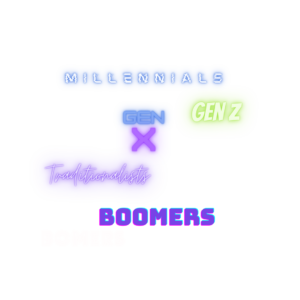
There are currently five generations in the workplace and that translates into diverse needs and wants. Some generations prioritize earning potential while others want flexibility in their schedules. An April article from Business Wire highlighted the survey results from The State of the Hourly Worker, conducted by Shiftboard, a provider of employee scheduling software for shift-based operations.
The survey highlighted a one-size-fits-all approach will not be effective for handling diverse generations. Scheduling flexibility and the creation of work-life balance being standouts of the survey. Prioritization of work flexibility signals younger generations place a larger emphasis on creating a balance between work and life. Shift choice and the ability to trade shifts is also important and is more important among union workers than non-union workers. This includes the flexibility to exchange overtime hours for more time off.
Additionally, schedule flexibility allows more time to spend with friends and family, start hobbies and engage in personal development. For businesses, scheduling flexibility could be the ticket to better job satisfaction, improved employee retention and more workforce engagement.
- Fifty-five percent of Gen Z want the ability to change hours on short notice.
- Fifty-one percent of Millennials value control over a schedule to work more, work less or cancel a shift.
- Forty-two percent of Gen X and 37% of Boomers prioritize control over their schedules.
Age Is an Asset
Despite a growing number of younger generations in the workplace, more businesses are seeing age as an asset, according to an April Wall Street Journal article. The number of companies looking to hire employees aged 55 and older is rising. And a growing number of companies are signing an AARP pledge to give workers over fifty fair considerations in hiring. More than 2,500 companies have signed the pledge since the program launched in 2012.
One thing all generations do agree on is the importance of work-life balance for job satisfaction in the workplace. Seventy-five percent say work-life balance is necessary and 20% say it is important.
“Managers used to the preferences of older generations might find these statistics surprising,” said Sterling Wilson, president, and CEO of Shiftboard. “Some generations focus on earning potential while others prioritize flexibility in their schedules. A one-size-fits-all management strategy will not be effective for managing these diverse generations. These findings tell us there is a diverse workforce emerging.”
Demographic Breakdown
- Gen Z (born between 1997-2012) – Gen Z is entering the workforce and soon will be a dominant part of the workforce.
- Millennials (born between 1981-1996) – Millennials are becoming increasingly dominant within the workforce.
- Gen X (born between 1965-1980) – Gen X represents a sizable portion of the workforce. The 55-and-older demographic is the fastest-growing segment of the workforce, according to U.S. government data.
- Boomers (born between 1946-1964) – Boomers are retiring from the workforce or will soon retire.
- Traditionalists (born before 1946) – Traditionalists are retiring from the workforce.
